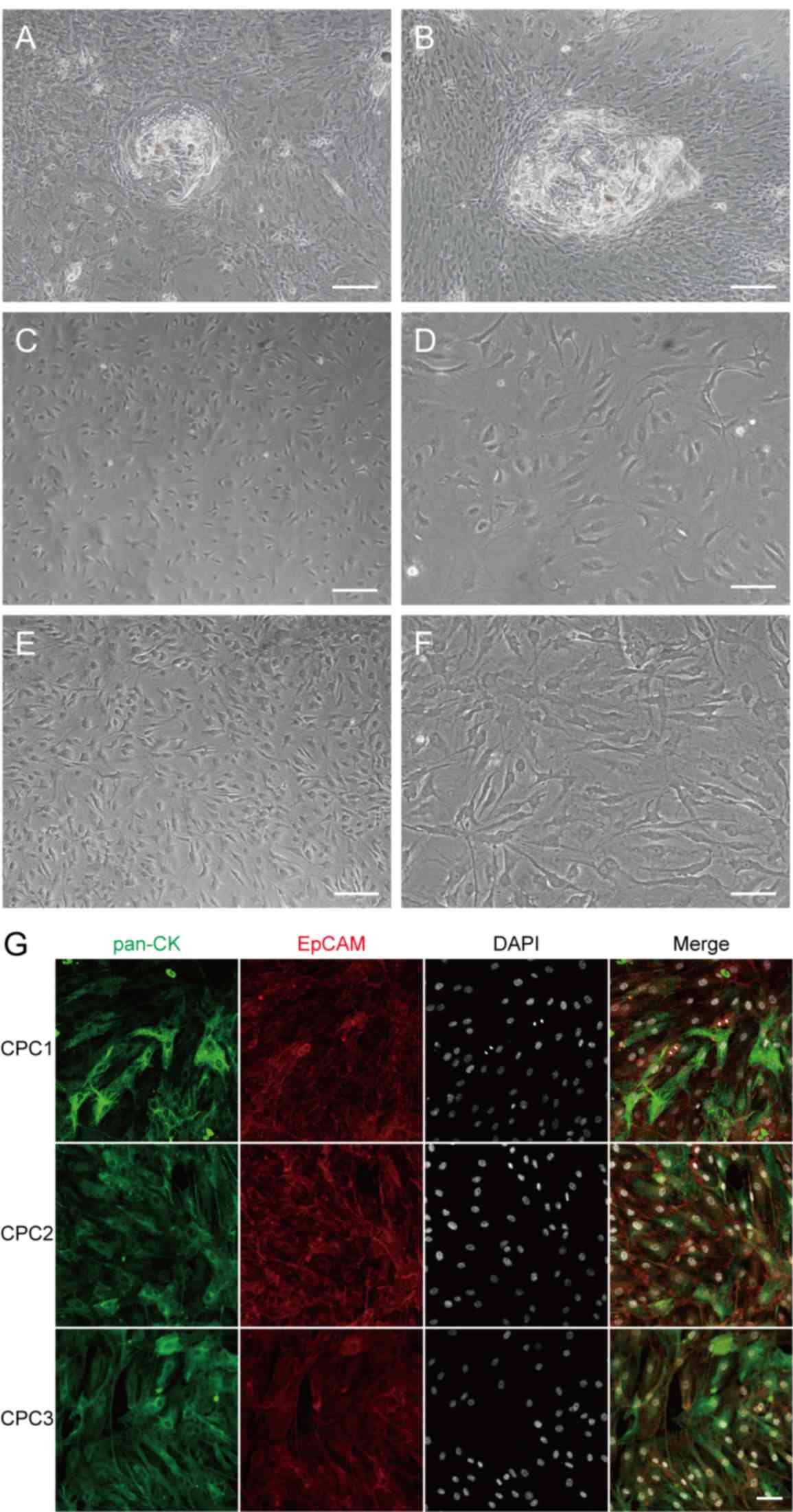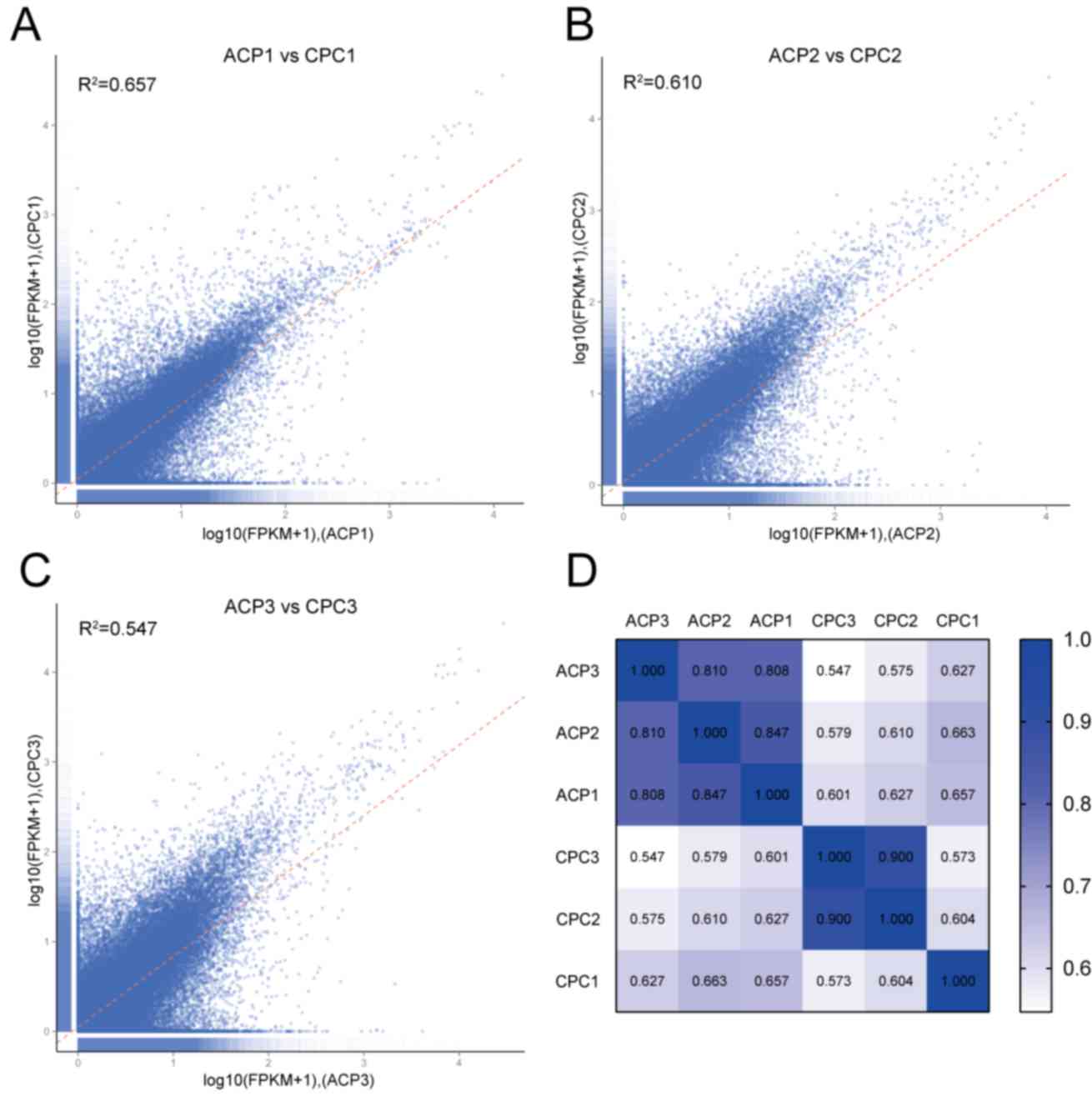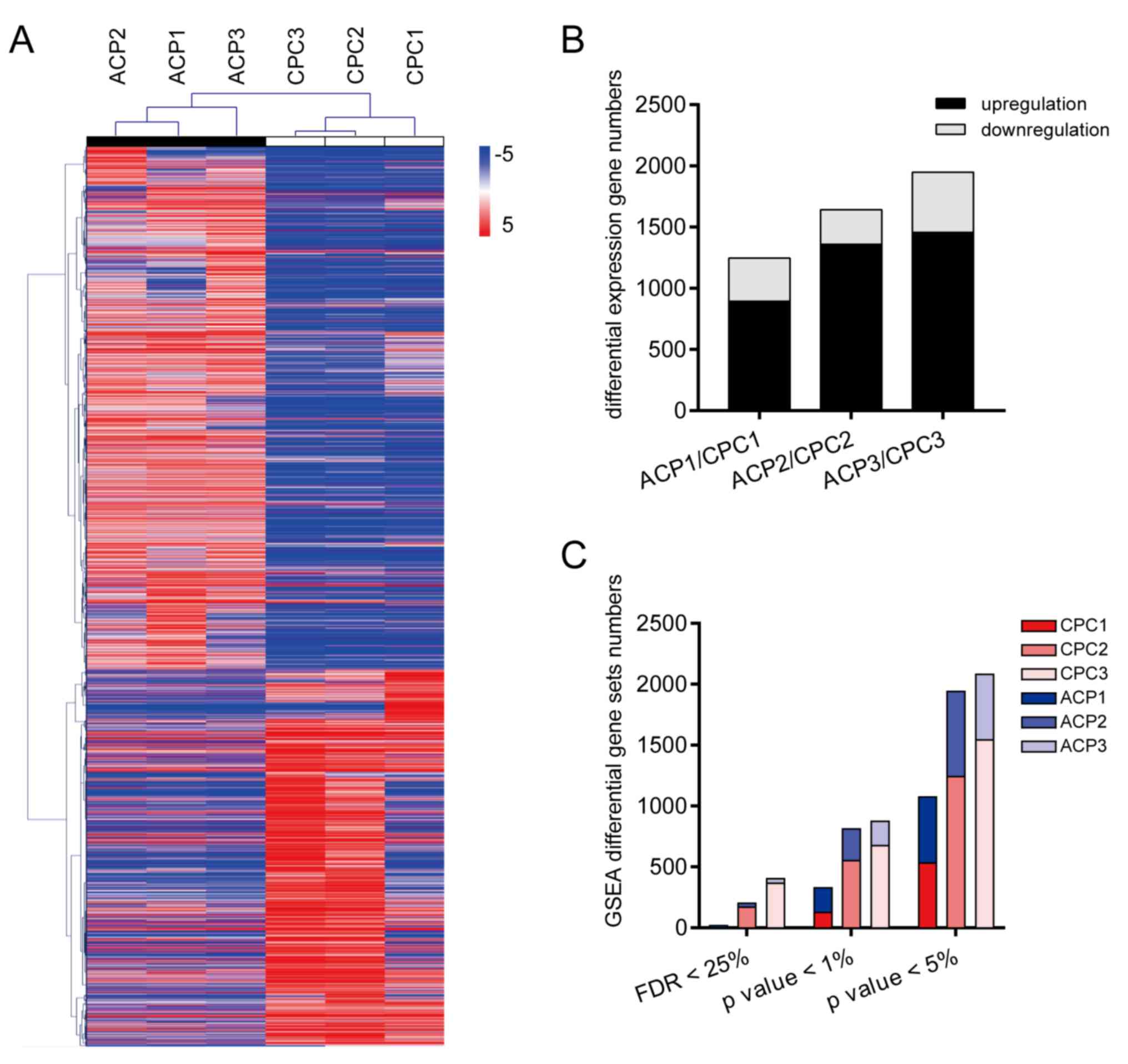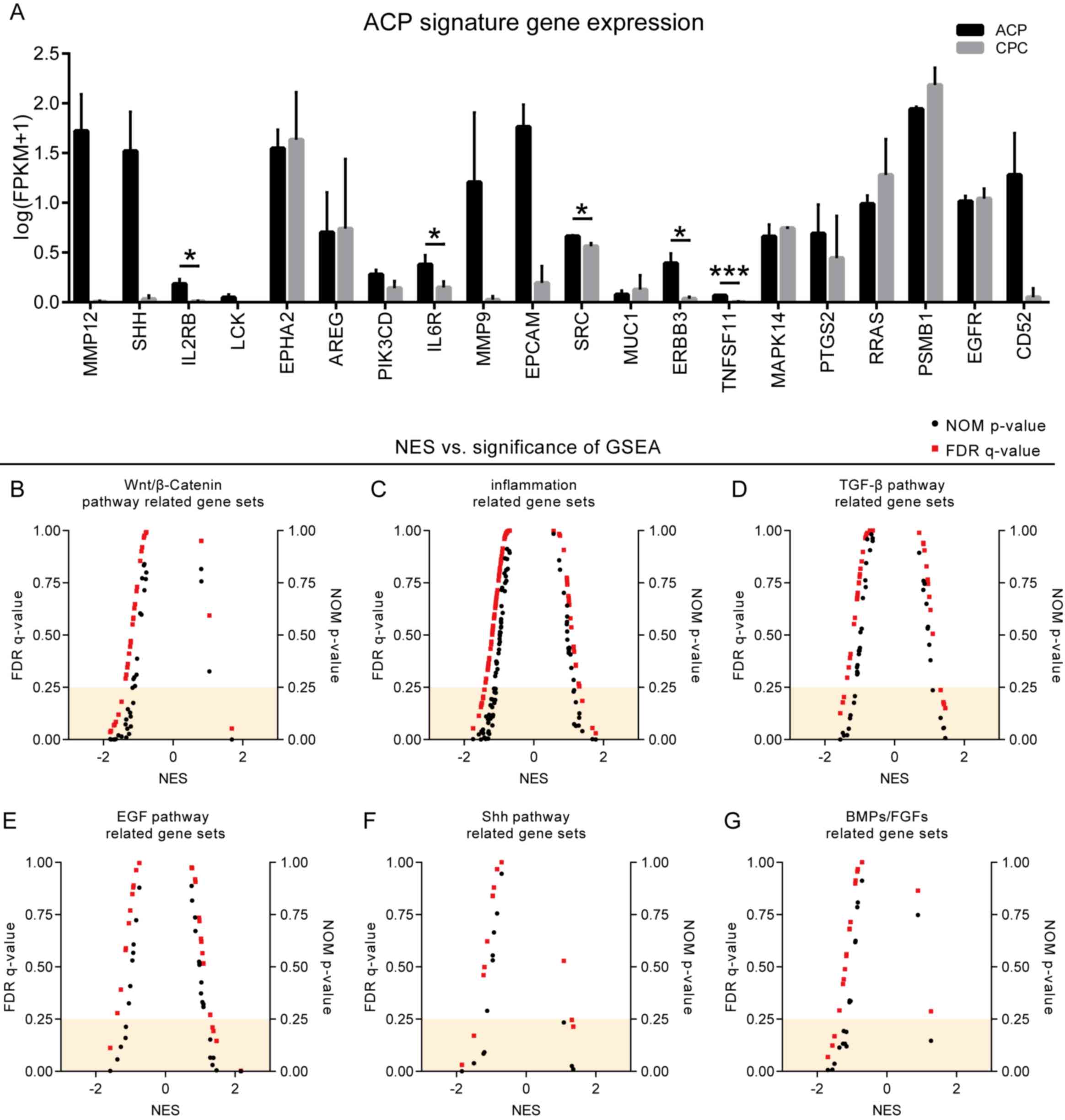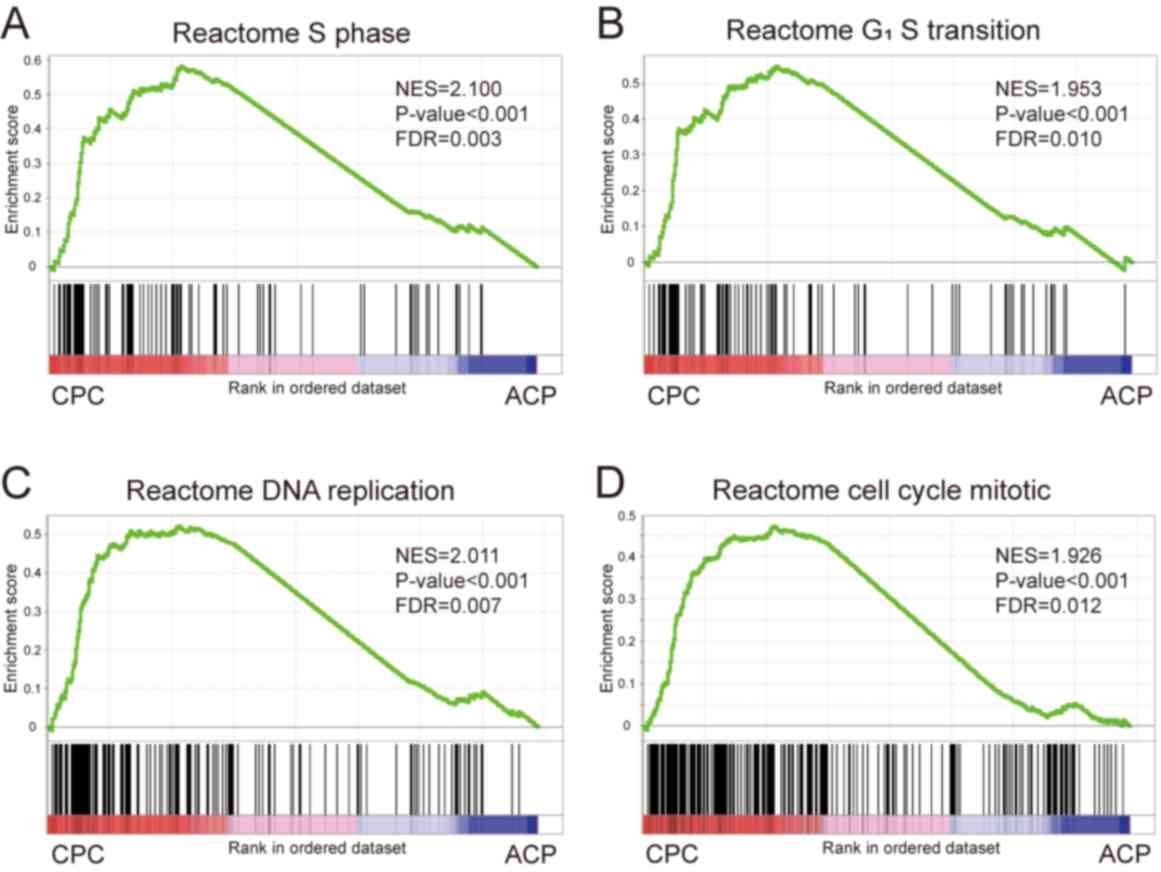|
1
|
Erfurth EM, Holmer H and Fjalldal SB:
Mortality and morbidity in adult craniopharyngioma. Pituitary.
16:46–55. 2013. View Article : Google Scholar : PubMed/NCBI
|
|
2
|
Olsson DS, Andersson E, Bryngelsson IL,
Nilsson AG and Johannsson G: Excess mortality and morbidity in
patients with craniopharyngioma, especially in patients with
childhood onset: A population-based study in Sweden. J Clin
Endocrinol Metab. 100:467–474. 2015. View Article : Google Scholar : PubMed/NCBI
|
|
3
|
Tomlinson JW, Holden N, Hills RK, Wheatley
K, Clayton RN, Bates AS, Sheppard MC and Stewart PM: Association
between premature mortality and hypopituitarism. West midlands
prospective hypopituitary study group. Lancet. 357:425–431. 2001.
View Article : Google Scholar : PubMed/NCBI
|
|
4
|
Muller HL, Merchant TE, Puget S and
Martinez-Barbera JP: New outlook on the diagnosis, treatment and
follow-up of childhood-onset craniopharyngioma. Nat Rev Endocrinol.
13:299–312. 2017. View Article : Google Scholar : PubMed/NCBI
|
|
5
|
Brastianos PK, Taylor-Weiner A, Manley PE,
Jones RT, Dias-Santagata D, Thorner AR, Lawrence MS, Rodriguez FJ,
Bernardo LA, Schubert L, et al: Exome sequencing identifies BRAF
mutations in papillary craniopharyngiomas. Nat Genet. 46:161–165.
2014. View
Article : Google Scholar : PubMed/NCBI
|
|
6
|
Kato K, Nakatani Y, Kanno H, Inayama Y,
Ijiri R, Nagahara N, Miyake T, Tanaka M, Ito Y, Aida N, et al:
Possible linkage between specific histological structures and
aberrant reactivation of the Wnt pathway in adamantinomatous
craniopharyngioma. J Pathol. 203:814–821. 2004. View Article : Google Scholar : PubMed/NCBI
|
|
7
|
Sekine S, Shibata T, Kokubu A, Morishita
Y, Noguchi M, Nakanishi Y, Sakamoto M and Hirohashi S:
Craniopharyngiomas of adamantinomatous type harbor beta-catenin
gene mutations. Am J Pathol. 161:1997–2001. 2002. View Article : Google Scholar : PubMed/NCBI
|
|
8
|
Hölsken A, Sill M, Merkle J, Schweizer L,
Buchfelder M, Flitsch J, Fahlbusch R, Metzler M, Kool M, Pfister
SM, et al: Adamantinomatous and papillary craniopharyngiomas are
characterized by distinct epigenomic as well as mutational and
transcriptomic profiles. Acta Neuropathol Commun. 4:202016.
View Article : Google Scholar : PubMed/NCBI
|
|
9
|
Gump JM, Donson AM, Birks DK, Amani VM,
Rao KK, Griesinger AM, Kleinschmidt-DeMasters BK, Johnston JM,
Anderson RC, Rosenfeld A, et al: Identification of targets for
rational pharmacological therapy in childhood craniopharyngioma.
Acta Neuropathol Commun. 3:302015. View Article : Google Scholar : PubMed/NCBI
|
|
10
|
Andoniadou CL, Matsushima D, Mousavy
Gharavy SN, Signore M, Mackintosh AI, Schaeffer M, Gaston-Massuet
C, Mollard P, Jacques TS, Le Tissier P, et al: Sox2(+)
stem/progenitor cells in the adult mouse pituitary support organ
homeostasis and have tumor-inducing potential. Cell Stem Cell.
13:433–445. 2013. View Article : Google Scholar : PubMed/NCBI
|
|
11
|
Gaston-Massuet C, Andoniadou CL, Signore
M, Jayakody SA, Charolidi N, Kyeyune R, Vernay B, Jacques TS,
Taketo MM, Le Tissier P, et al: Increased Wingless (Wnt) signaling
in pituitary progenitor/stem cells gives rise to pituitary tumors
in mice and humans. Proc Natl Acad Sci USA. 108:11482–11487. 2011.
View Article : Google Scholar : PubMed/NCBI
|
|
12
|
Hölsken A and Buslei R: Models of human
adamantinomatous craniopharyngioma tissue: Steps toward an
effective adjuvant treatment. Brain Pathol. 27:358–363. 2017.
View Article : Google Scholar : PubMed/NCBI
|
|
13
|
Hölsken A, Buchfelder M, Fahlbusch R,
Blümcke I and Buslei R: Tumour cell migration in adamantinomatous
craniopharyngiomas is promoted by activated Wnt-signalling. Acta
Neuropathol. 119:631–639. 2010. View Article : Google Scholar : PubMed/NCBI
|
|
14
|
Chen M, Zheng SH, Liu Y, Shi J and Qi ST:
Periostin activates pathways involved in epithelial-mesenchymal
transition in adamantinomatous craniopharyngioma. J Neurol Sci.
360:49–54. 2016. View Article : Google Scholar : PubMed/NCBI
|
|
15
|
Liu Y, Wang CH, Li DL, Zhang SC, Peng YP,
Peng JX, Song Y, Qi ST and Pan J: TREM-1 expression in
craniopharyngioma and Rathke's cleft cyst: Its possible implication
for controversial pathology. Oncotarget. 7:50564–50574.
2016.PubMed/NCBI
|
|
16
|
Langmead B and Salzberg SL: Fast
gapped-read alignment with Bowtie 2. Nat Methods. 9:357–359. 2012.
View Article : Google Scholar : PubMed/NCBI
|
|
17
|
Pertea M, Kim D, Pertea GM, Leek JT and
Salzberg SL: Transcript-level expression analysis of RNA-seq
experiments with HISAT, StringTie and Ballgown. Nat Protoc.
11:1650–1667. 2016. View Article : Google Scholar : PubMed/NCBI
|
|
18
|
Kim D, Langmead B and Salzberg SL: HISAT:
A fast spliced aligner with low memory requirements. Nat Methods.
12:357–360. 2015. View Article : Google Scholar : PubMed/NCBI
|
|
19
|
Pertea M, Pertea GM, Antonescu CM, Chang
TC, Mendell JT and Salzberg SL: StringTie enables improved
reconstruction of a transcriptome from RNA-seq reads. Nat
Biotechnol. 33:290–295. 2015. View
Article : Google Scholar : PubMed/NCBI
|
|
20
|
Trapnell C, Williams BA, Pertea G,
Mortazavi A, Kwan G, van Baren MJ, Salzberg SL, Wold BJ and Pachter
L: Transcript assembly and quantification by RNA-Seq reveals
unannotated transcripts and isoform switching during cell
differentiation. Nat Biotechnol. 28:511–515. 2010. View Article : Google Scholar : PubMed/NCBI
|
|
21
|
Frazee AC, Sabunciyan S, Hansen KD,
Irizarry RA and Leek JT: Differential expression analysis of
RNA-seq data at single-base resolution. Biostatistics. 15:413–426.
2014. View Article : Google Scholar : PubMed/NCBI
|
|
22
|
Mootha VK, Lindgren CM, Eriksson KF,
Subramanian A, Sihag S, Lehar J, Puigserver P, Carlsson E,
Ridderstråle M, Laurila E, et al: PGC-1alpha-responsive genes
involved in oxidative phosphorylation are coordinately
downregulated in human diabetes. Nat Genet. 34:267–273. 2003.
View Article : Google Scholar : PubMed/NCBI
|
|
23
|
Subramanian A, Tamayo P, Mootha VK,
Mukherjee S, Ebert BL, Gillette MA, Paulovich A, Pomeroy SL, Golub
TR, Lander ES and Mesirov JP: Gene set enrichment analysis: A
knowledge-based approach for interpreting genome-wide expression
profiles. Proc Natl Acad Sci USA. 102:15545–15550. 2005. View Article : Google Scholar : PubMed/NCBI
|
|
24
|
Thimsen V, Hölsken A, Buchfelder M,
Flitsch J, Fahlbusch R, Stefanits H, Losa M, Jones DT and Buslei R:
EpCAM (CD326) is differentially expressed in craniopharyngioma
subtypes and Rathke's cleft cysts. Sci Rep. 6:297312016. View Article : Google Scholar : PubMed/NCBI
|
|
25
|
Gonzalez-Meljem JM, Haston S, Carreno G,
Apps JR, Pozzi S, Stache C, Kaushal G, Virasami A, Panousopoulos L,
Mousavy-Gharavy SN, et al: Stem cell senescence drives
age-attenuated induction of pituitary tumours in mouse models of
paediatric craniopharyngioma. Nat Commun. 8:18192017. View Article : Google Scholar : PubMed/NCBI
|
|
26
|
Campanini ML, Colli LM, Paixao BM, Cabral
TP, Amaral FC, Machado HR, Neder LS, Saggioro F, Moreira AC,
Antonini SR and de Castro M: CTNNB1 gene mutations, pituitary
transcription factors, and MicroRNA expression involvement in the
pathogenesis of adamantinomatous craniopharyngiomas. Horm Cancer.
1:187–196. 2010. View Article : Google Scholar : PubMed/NCBI
|
|
27
|
Sekine S, Sato S, Takata T, Fukuda Y,
Ishida T, Kishino M, Shibata T, Kanai Y and Hirohashi S:
Beta-catenin mutations are frequent in calcifying odontogenic
cysts, but rare in ameloblastomas. Am J Pathol. 163:1707–1712.
2003. View Article : Google Scholar : PubMed/NCBI
|
|
28
|
Hölsken A, Kreutzer J, Hofmann BM, Hans V,
Oppel F, Buchfelder M, Fahlbusch R, Blümcke I and Buslei R: Target
gene activation of the Wnt signaling pathway in nuclear
beta-catenin accumulating cells of adamantinomatous
craniopharyngiomas. Brain Pathol. 19:357–364. 2009. View Article : Google Scholar : PubMed/NCBI
|
|
29
|
van Dijk EL, Auger H, Jaszczyszyn Y and
Thermes C: Ten years of next-generation sequencing technology.
Trends Genet. 30:418–426. 2014. View Article : Google Scholar : PubMed/NCBI
|
|
30
|
Foo JN, Liu JJ and Tan EK: Whole-genome
and whole-exome sequencing in neurological diseases. Nat Rev
Neurol. 8:508–517. 2012. View Article : Google Scholar : PubMed/NCBI
|
|
31
|
Pickrell JK, Marioni JC, Pai AA, Degner
JF, Engelhardt BE, Nkadori E, Veyrieras JB, Stephens M, Gilad Y and
Pritchard JK: Understanding mechanisms underlying human gene
expression variation with RNA sequencing. Nature. 464:768–772.
2010. View Article : Google Scholar : PubMed/NCBI
|
|
32
|
Wang Z, Gerstein M and Snyder M: RNA-Seq:
A revolutionary tool for transcriptomics. Nat Rev Genet. 10:57–63.
2009. View
Article : Google Scholar : PubMed/NCBI
|
|
33
|
Byron SA, Van Keuren-Jensen KR,
Engelthaler DM, Carpten JD and Craig DW: Translating RNA sequencing
into clinical diagnostics: Opportunities and challenges. Nat Rev
Genet. 17:257–271. 2016. View Article : Google Scholar : PubMed/NCBI
|
|
34
|
Jeppesen M, Hagel G, Glenthoj A, Vainer B,
Ibsen P, Harling H, Thastrup O, Jørgensen LN and Thastrup J:
Short-term spheroid culture of primary colorectal cancer cells as
an in vitro model for personalizing cancer medicine. PLoS One.
12:e01830742017. View Article : Google Scholar : PubMed/NCBI
|
|
35
|
Mahajan AS, Sugita BM, Duttargi AN, Saenz
F, Krawczyk E, McCutcheon JN, Fonseca AS, Kallakury B, Pohlmann P,
Gusev Y and Cavalli LR: Genomic comparison of early-passage
conditionally reprogrammed breast cancer cells to their
corresponding primary tumors. PLoS One. 12:e01861902017. View Article : Google Scholar : PubMed/NCBI
|
|
36
|
Broutier L, Mastrogiovanni G, Verstegen
MM, Francies HE, Gavarró LM, Bradshaw CR, Allen GE, Arnes-Benito R,
Sidorova O, Gaspersz MP, et al: Human primary liver cancer-derived
organoid cultures for disease modeling and drug screening. Nat Med.
23:1424–1435. 2017. View
Article : Google Scholar : PubMed/NCBI
|
|
37
|
Mortazavi A, Williams BA, McCue K,
Schaeffer L and Wold B: Mapping and quantifying mammalian
transcriptomes by RNA-Seq. Nat Methods. 5:621–628. 2008. View Article : Google Scholar : PubMed/NCBI
|















